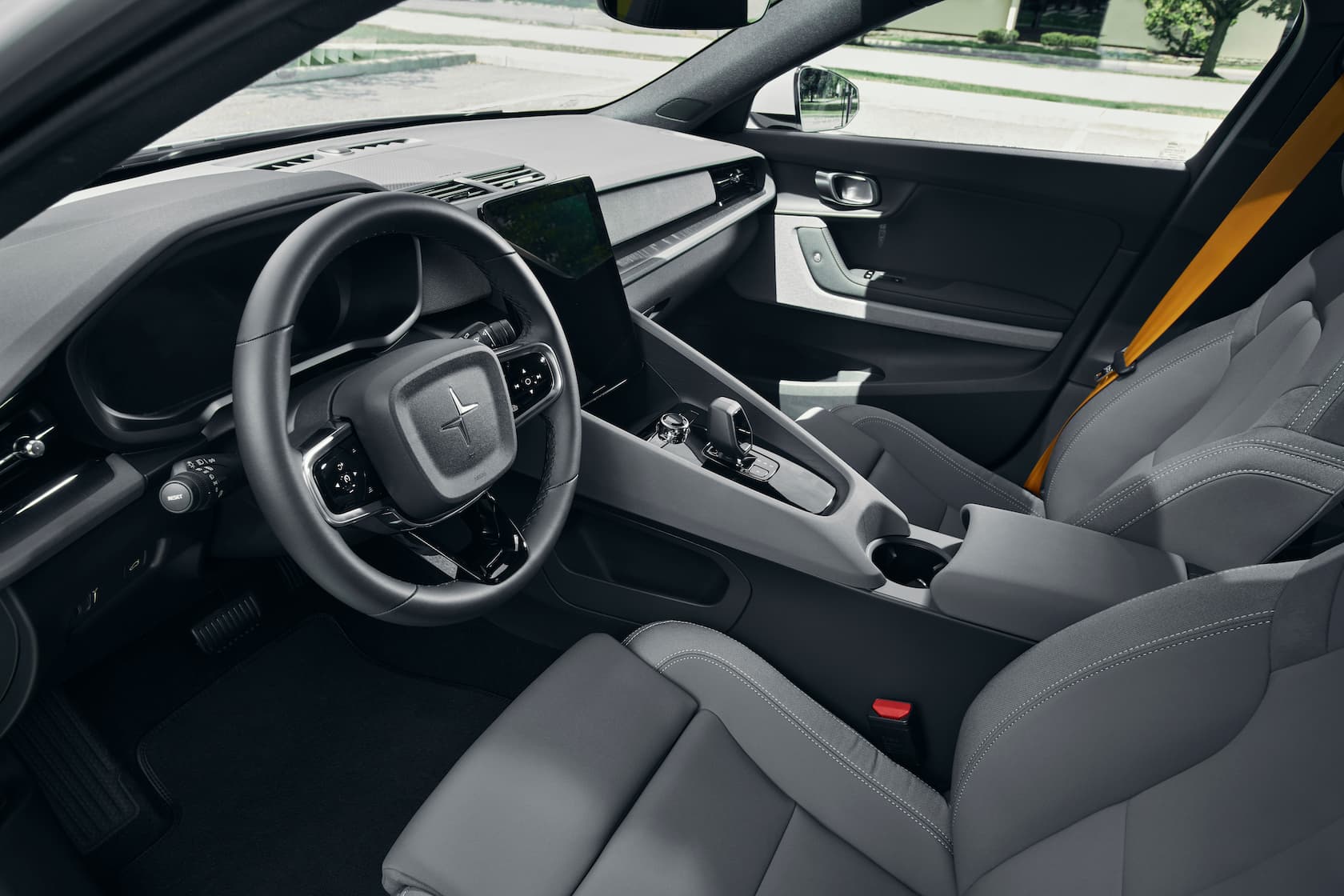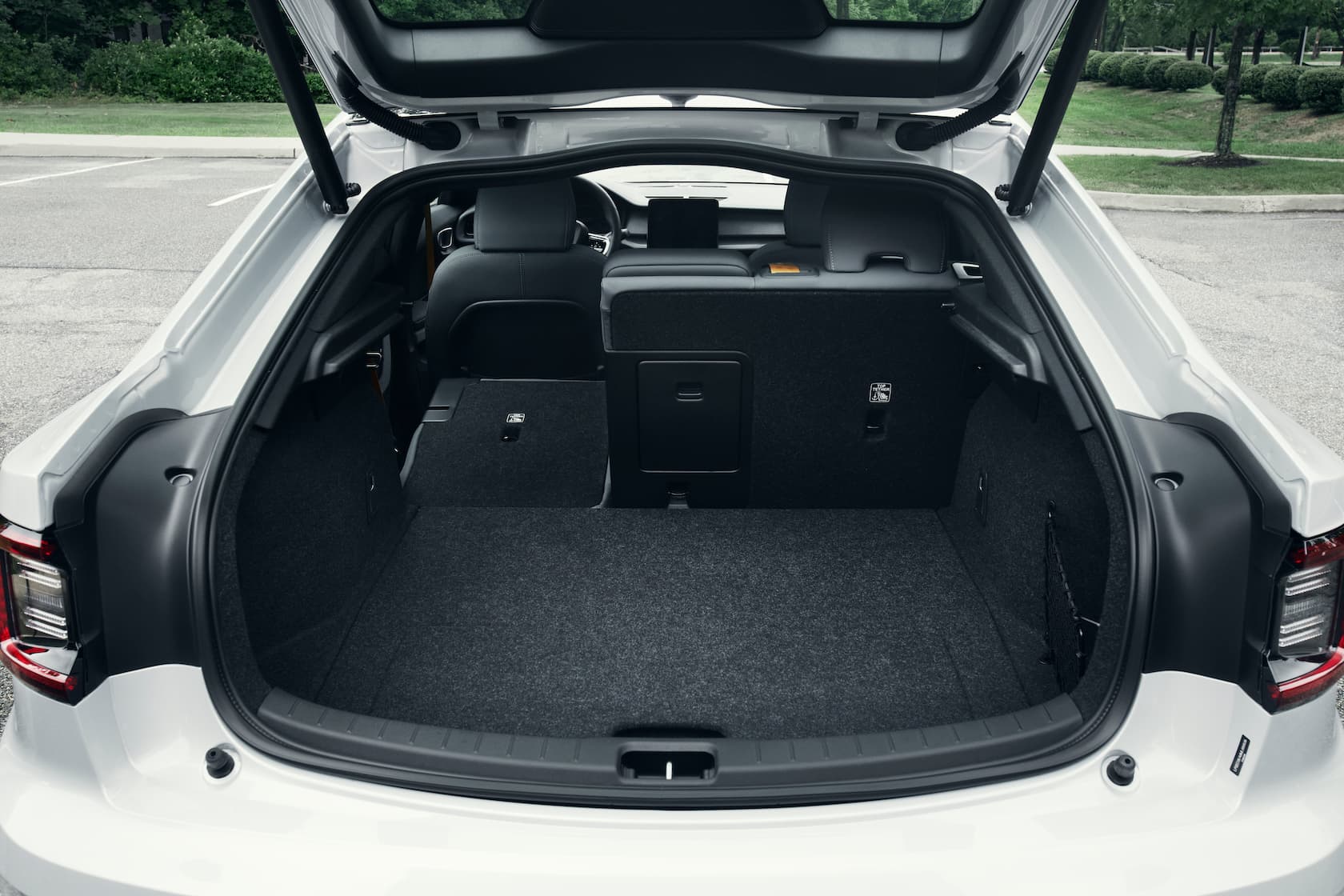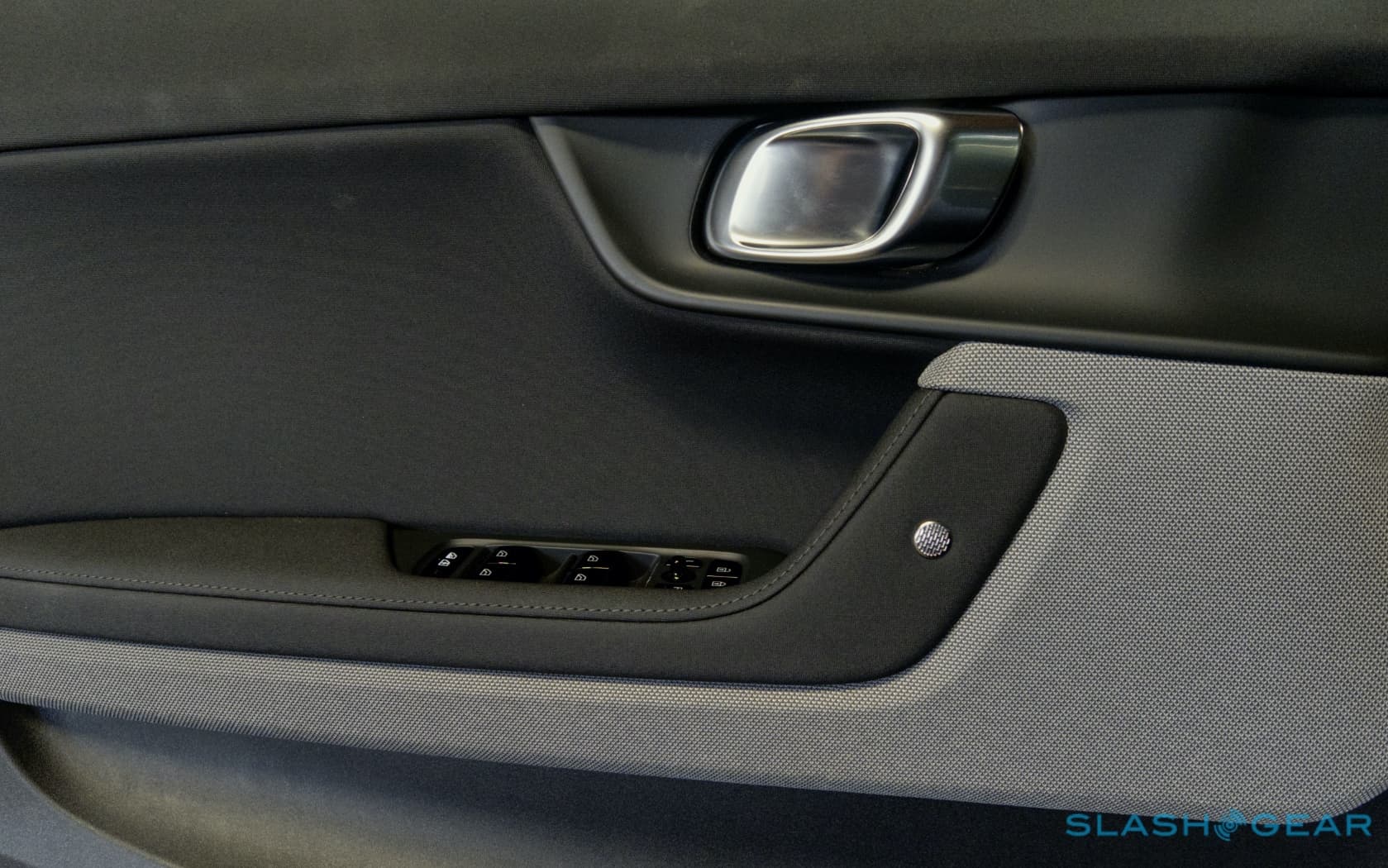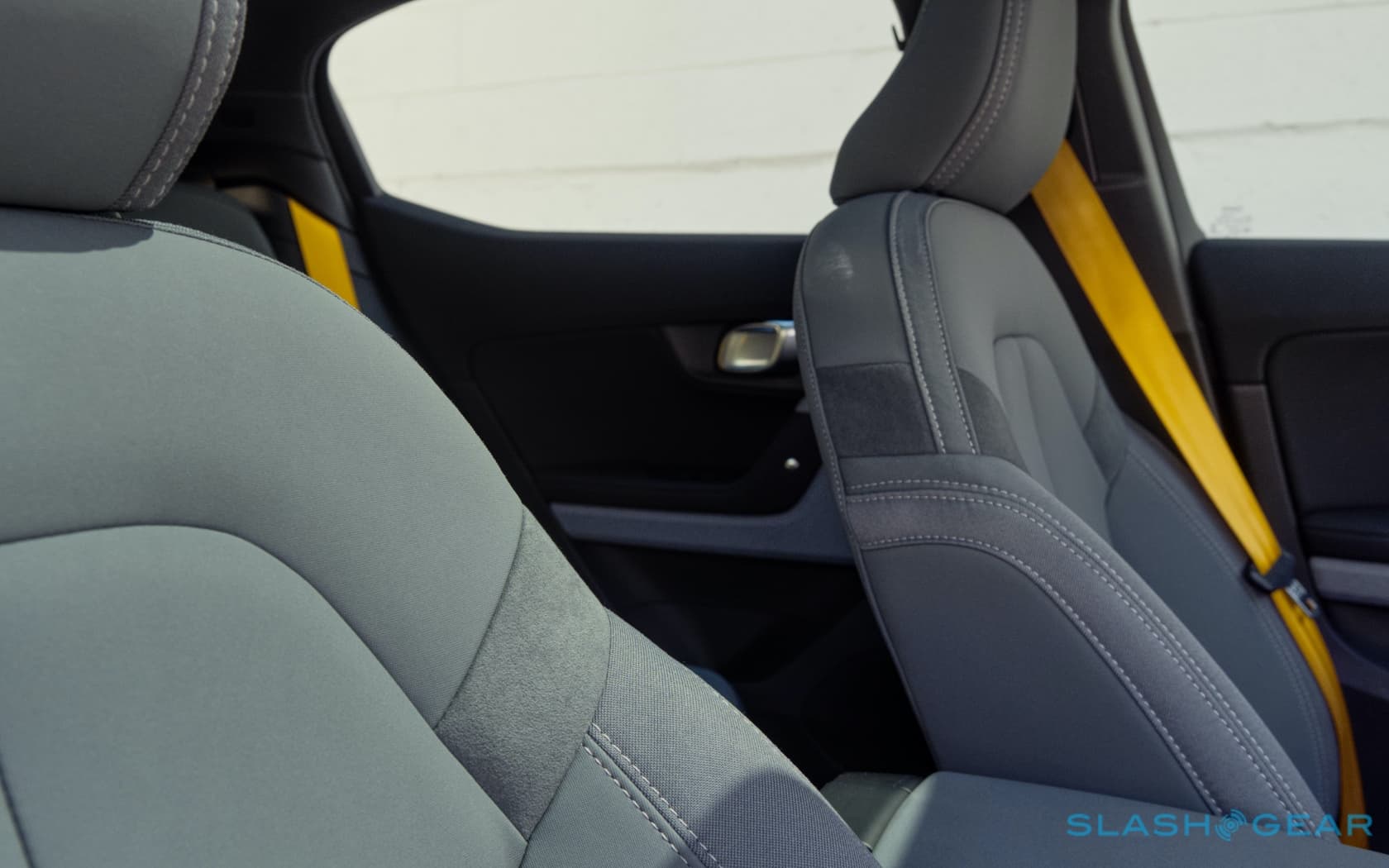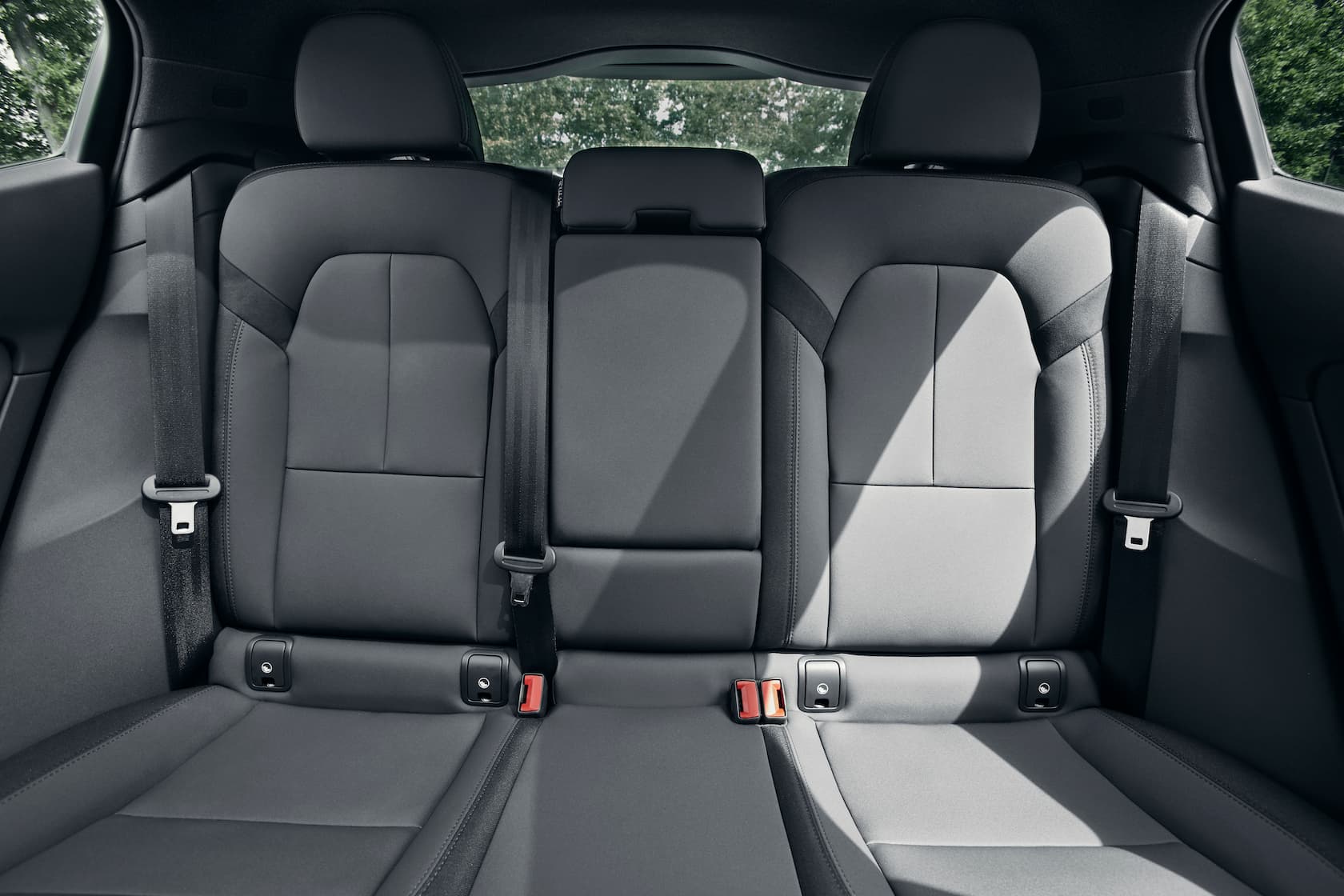2021 Polestar 2 First Drive - Electric Confidence
The Polestar 2 arrives to plenty of big expectations. Probably the most direct competition the Tesla Model 3 has faced so far, this handiwork of a Volvo and Geely collaboration gets to cherry-pick the best of their tech, then fast-track it to roads without the headache of an internal-combustion legacy. In theory, that means the best of establishment automaker and agile startup principles; in practice, we know little necessarily goes to plan in the EV world.
The Polestar 1 gave us half a taste of what the automaker had in mind, though as a plug-in hybrid – and indeed Polestar's first and last model to use a gas engine – it didn't fully illustrate the EV vision. Still, the shapely coupe more than whet the appetite, with its focus on refined styling and unexpectedly usable performance. Only its $155k price tag and highly limited production numbers dimmed its star.
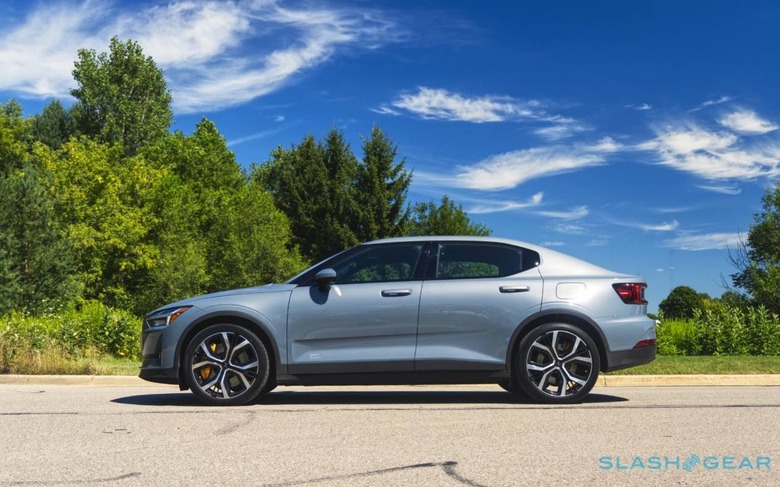
Available to order now, the Polestar 2 Launch Edition starts at a far more reasonable $59,900 (plus destination). Cunningly, having hewed off as a separate brand, Polestar gets its own US federal tax incentive allowance, separate from that of Volvo. That knocks up to $7,500 off the sticker price of its cars, on top of any state incentives.
It's a handsome car, deceptively large in photos and very color dependent. Polestar's choice of finishes definitely errs on the sober side, all grays, silvers, and cool blues alongside the standard black, but lighter paint visually lifts the EV and leaves it a little less monolithic to the eye.
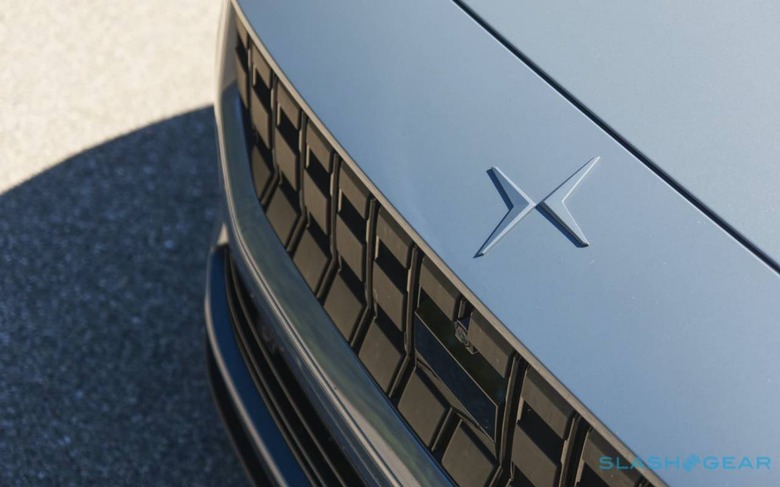
The styling doesn't scream "electric" but nor does it blend in. Hints of Volvo aesthetic run throughout, unsurprisingly, but crisper and more confident; there's a pleasing assurance to the lines, futuristic without stumbling into pastiche. It turns heads and prompts questions, something the unfamiliar point-to-point chevron of the Polestar logo isn't exactly helpful at answering.
Polestar 2 cabin, both human and animal-friendly
Things only get better inside. Polestar says the cabin is vegan, but rather than opt for faux-leather the seats, door trims, and dashboard use a new sustainable fabric called WeaveTech. Think cloth, but elevated: it's soft but apparently highly durable, with hints of cutting-edge sportswear. Combined with cool reconstructed wood inlays and subtle hidden LED lighting it's bold and cohesive and, while Polestar will offer chrome-free Nappa leather as an option, really the only reason to get it is for the ventilation that's inexplicably not offered on the standard seats.
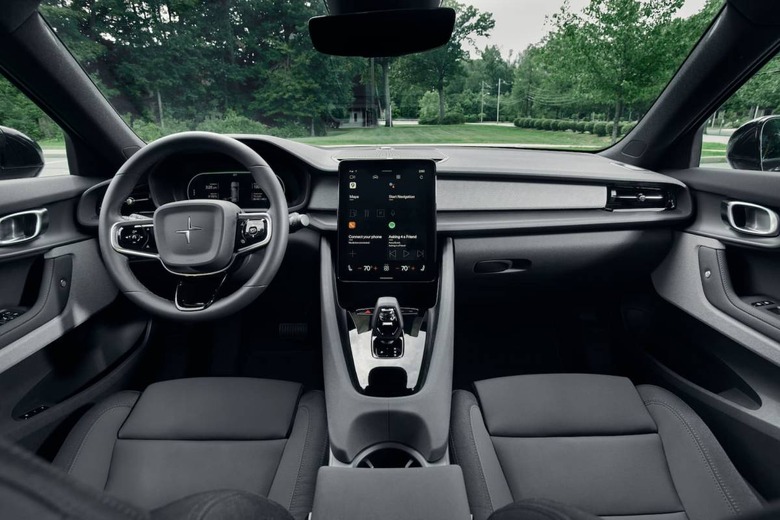
Most of the interface is digital, a screen for the driver's instrumentation and a large, 11.15-inch portrait aspect touchscreen slightly cantilevered from the center console. What physical controls remain are thoughtful: a transmission selector that feels like an architect's study of negative space, and a faceted volume knob for the 600W Harman Kardon audio system. There's Volvo switchgear, like the steering wheel controls, vent knobs, window switches, and stalks, but it's the best of the Swedes' catalog and all fits together nicely.
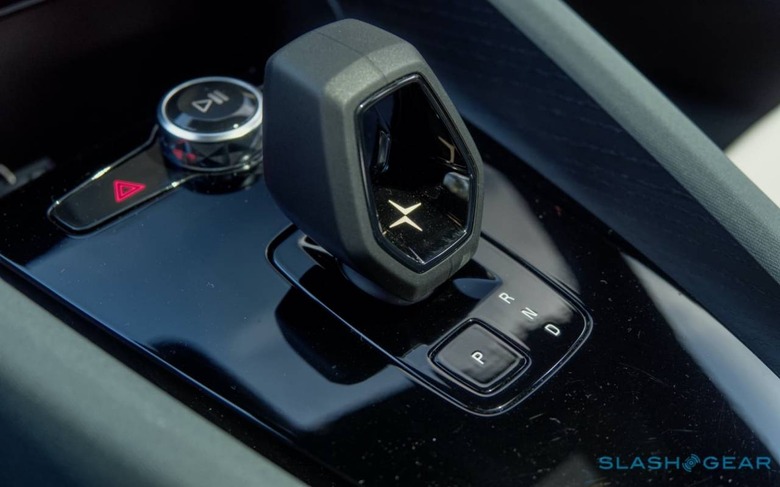
As a five seater, there's plenty of space for four adults; the center rear seat is a little tighter. No shortage of cubbies and pockets and bins for storage, either, while the rear bench folds down to expand the trunk from 14.3 cu-ft to 37.5 cu-ft. You get another 1.2 cu-ft in the "frunk" too, along with a power tailgate that can be triggered by waggling your foot anywhere under the rear bumper. Clever organization of the battery pack makes sure rear seat passengers have enough legroom so that their knees aren't around their ears.
Polestar 2 starts out in a single configuration, the well-equipped Launch Edition having four USB-C ports, dual-zone climate control, a panoramic glass roof, 15W wireless phone charging pad, Pilot Assist adaptive cruise control with lane-keeping, front and rear heated seats, a heated steering wheel, and SiriusXM. Wireless Apple CarPlay and wired Android Auto are included too. Eventually, there'll be a more affordable base car which will offer the Launch Edition features in individual Plus and Pilot packages, though pricing for that model hasn't been confirmed yet.
Android Automotive OS promises a whole new dashboard
What all trims will have is Android Automotive OS at the Polestar 2's heart. First vehicle to market with Google's platform, unlike Android Auto – which runs on your smartphone and simply projects its interface to the dashboard display – this new OS variant actually runs on the car's own systems. It means much tighter integration, not to mention the Google Assistant as your voice interface, and Google Maps for navigation.
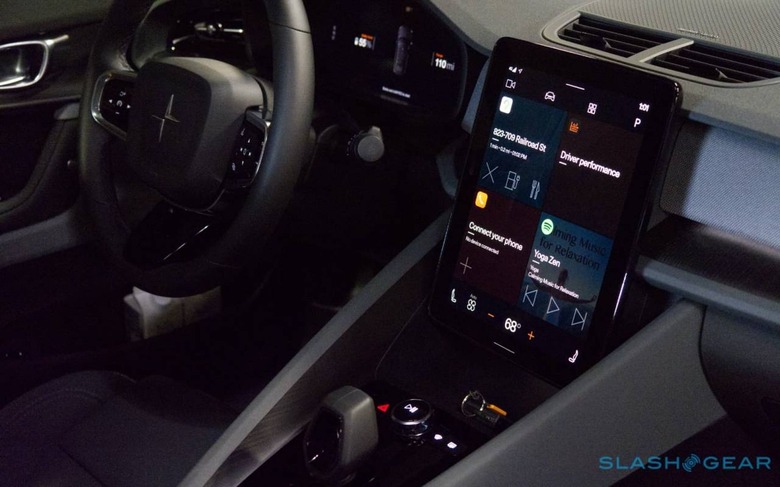
It may be Google software, but the aesthetic is all Polestar's. The graphics err on the side of simplistic: there's a home screen with four panes of apps organized into categories like navigation and multimedia; big shortcut tabs at the top for the 360-degree camera that makes up for middling rear visibility, the vehicle settings, and user-profiles; and persistent icons at the bottom for the climate control. The driver's display is similarly minimal, with a choice of three layouts – including range, speed, and battery info overlaid on a full-screen map – and easy to understand gauges.
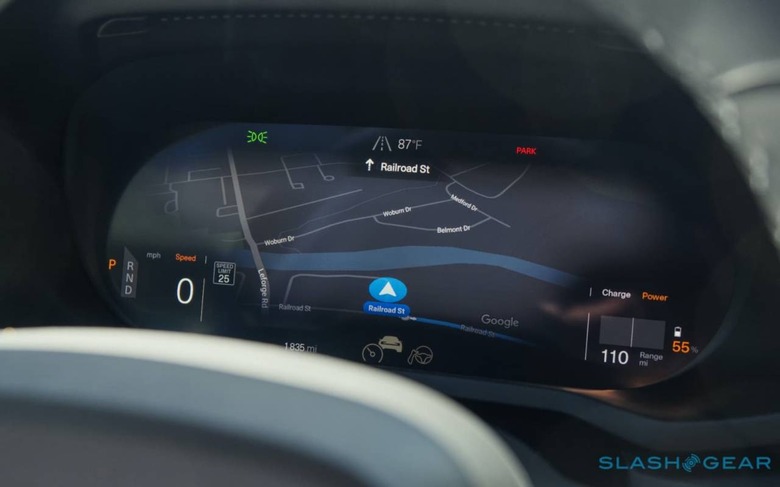
You can tap at the touchscreen or use the steering wheel controls, or you can just say "Hey Google." Pretty much anything you can do on a Google Home smart speaker can be done in the Polestar 2 – including asking general knowledge questions or remotely controlling smart home devices paired with your Google account – but because Android Automotive OS is woven into the car's systems you can control those by voice as well.
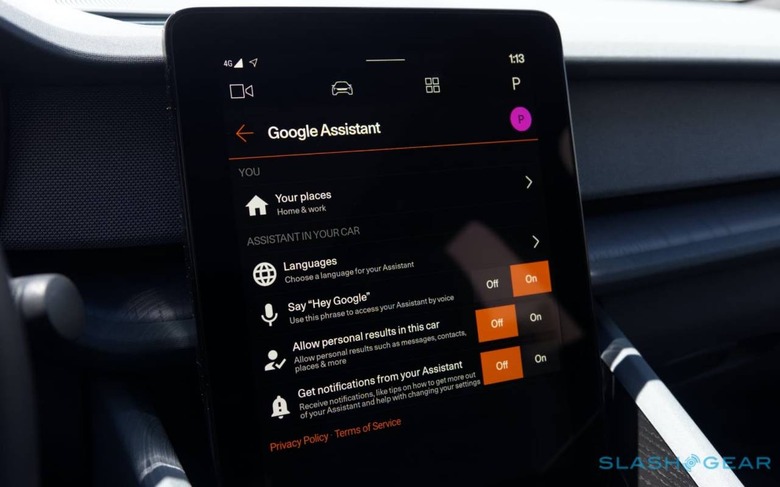
That includes asking about remaining range, adjusting cabin temperature, or requesting charging stations be added to the current route. You can ask Google Maps how much battery you'll have left by the time you reach your destination, and it's a dynamic estimate too, changing according to driving style and traffic. The only thing missing is a more conversational style of interaction: you can't ask a follow-up question without saying "Hey Google" again and, unlike with Mercedes' latest voice control system, if you say "I'm cold" the Polestar 2 will simply commiserate rather than know to turn the heating up a few degrees.
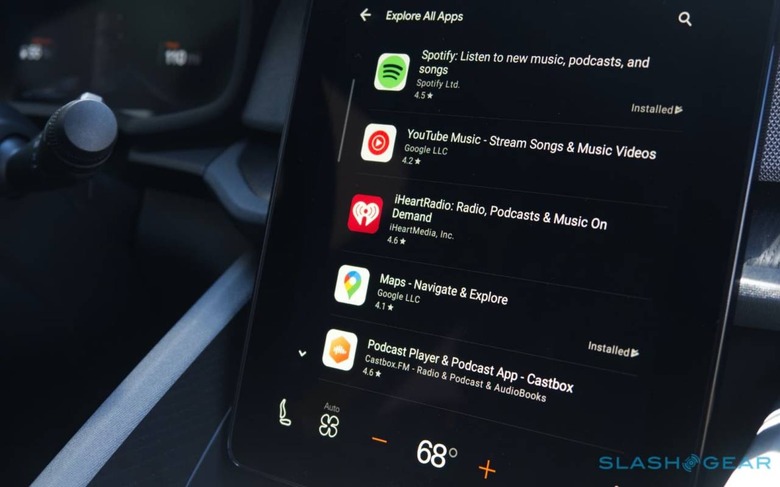
Android Automotive OS also grants access to the Google Play store, though don't assume that means anything running on your smartphone will be available for your Polestar. The reality is there's only a handful of third-party apps, mainly audio-related like Spotify and YouTube Music, at present. If there's an upside, it's that the slow pipeline to the dashboard is to maximize in-car usability, like ensuring the controls are easy and safe to use, and that the Assistant can manage everything by voice. I was able to ask for music and the Assistant knew to use Spotify, which was installed on my demo car, streaming it over the embedded 4G LTE connection.
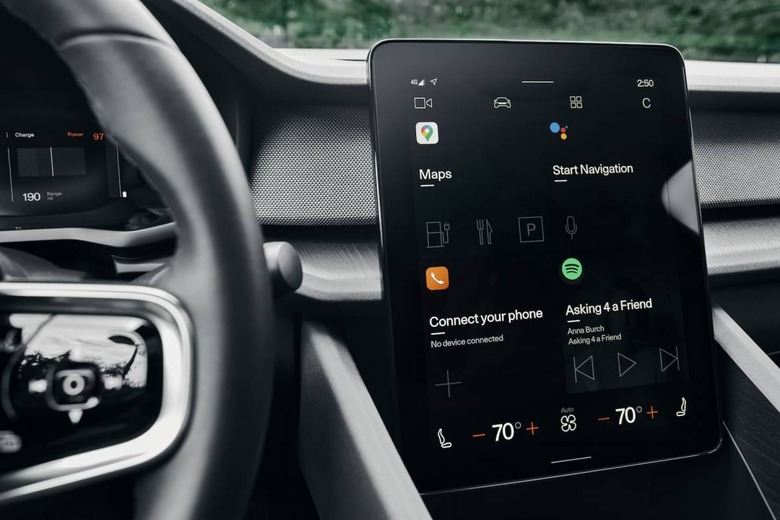
Polestar 2 buyers will get three years of AT&T service included, and that's not just for apps and traffic data. It'll also be used to deliver over-the-air (OTA) updates for the car, with Polestar able to tweak everything from infotainment through to motor performance via software changes. That's something we've seen Tesla use to great effect, and Polestar has made sure features like Pilot Assist are also OTS upgrade capable. Google Maps automatically caches navigation data for when you're outside coverage, meanwhile, and the car has sufficient onboard smarts that the Assistant can keep processing voice commands even without its connection to the cloud.
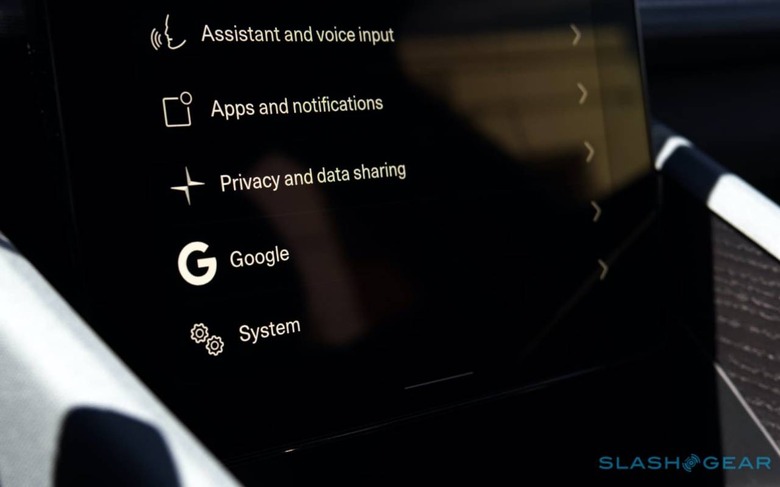
If Google's contribution is successful in many ways, it also inevitably brings a question of privacy to the EV. You can, of course, log into the Polestar 2 with your regular Google account; or, you can set up a separate account just for the car. Multiple driver profiles can be saved, for different users. If you'd rather minimize your involvement with the search giant altogether, you can ignore an account completely: then you still get navigation and local-processing for voice control, but you're only bound by Polestar's user-agreement not Google's. You could choose to use your smartphone instead, either via Android Auto or CarPlay, or simply with a Bluetooth connection.
Polestar 2 on the road
Initially there's only one drivetrain option, with Polestar 2 having all-wheel drive via two AC permanent magnet motors (from Valeo-Siemens) each delivering 204 hp (150kW) to their respective axles, front and rear. That means 408 horsepower (300 kW) along with 487 lb-ft of torque in total. 0-60 mph comes in 4.7 seconds, while top speed is an electronically-limited 127 mph.
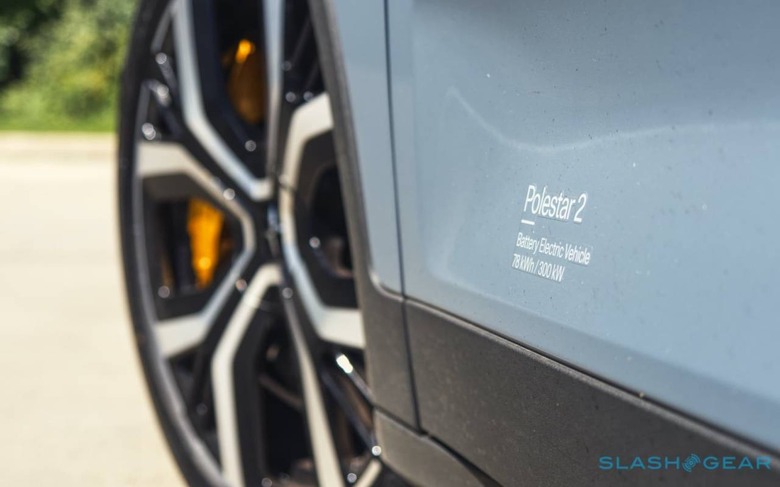
It's all more than acceptable from behind the wheel. Mash the accelerator and you get that addictive wave of instant torque, combined with a satisfying thrum rather than the bordering-on-harsh electric shriek some EV motors produce. If you've just got out of a Ludicrous mode Tesla you might not be entirely impressed – and I'll confess, I do find myself wondering what a Polestar 2 with more power might feel like – but it certainly doesn't feel slow or lacking.
There are three levels of regeneration, through from none at all when you lift off the accelerator, to a medium setting, to maximum for true one-pedal driving. Lift your foot in that mode, and the Polestar 2 can eventually come to a stop without you touching the brakes; an automatic-emulating creep mode is optional as well. Polestar's max-regen is on the aggressive side, great for urban nipping and more entertaining driving when you're blessed with back roads, but perhaps a little too eager to modulate entirely without jerkiness on the highway. Happily it's easy to change settings even while you're on the move.
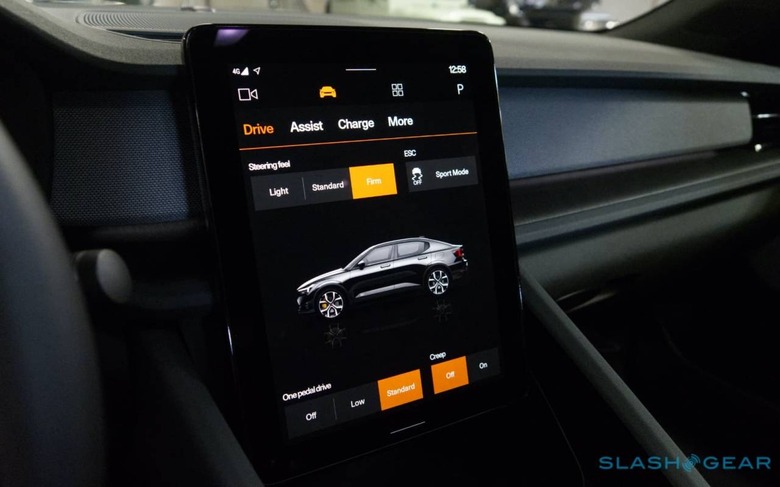
When you do need the brakes, there you have a choice. My tester was fitted with the $5,000 Performance Pack, which upgrades the front wheels with four-piston Brembo calipers specially designed for EVs. They're more than sufficient to haul the 4,680 pound hatchback to a halt in short order, the automaker claiming 60 mph to a standstill takes 115 feet, or around 20 feet less than with the standard anchors. A neat little meter in the driver's display shows whether you're slowing with regen or the physical brakes.
Come the corners, Polestar 2 hides its heft well. There's a 51/49 weight balance, front to rear, and by default the car has a slight RWD bias. It will, of course, shuffle power from one end to the other depending on traction demands.
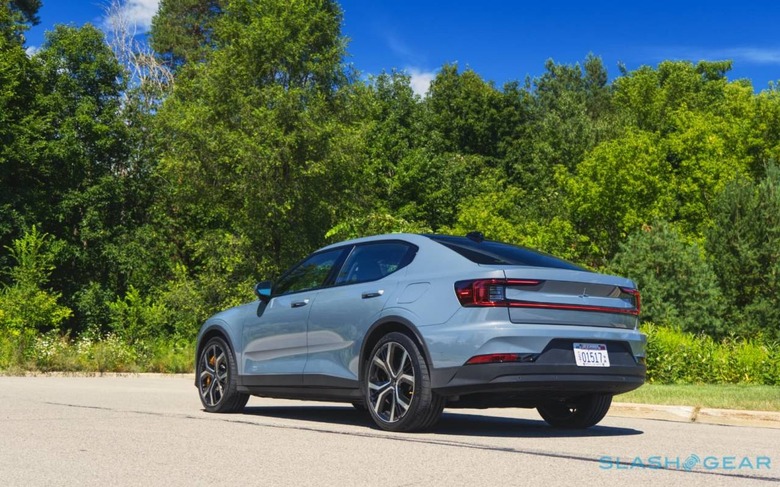
Performance Pack cars get Öhlins dampers and Continental SportContact 6 rubber on their special 20-inch forged wheels; regular cars have 19-inch wheels as standard, with 20-inch versions optional. The Öhlins dual flow valve dampers are adjustable, too, though unlike in most cars it'll take more than just choosing a different drive mode from the dashboard.
There's a physical knob for each wheel, in fact, clicking their way through 22 steps from softer through to firmer. Polestar says it's a much lighter system than a digitally-adjusted version would be, though I question just how many people will actually take the time to get out and finesse the settings more than once.
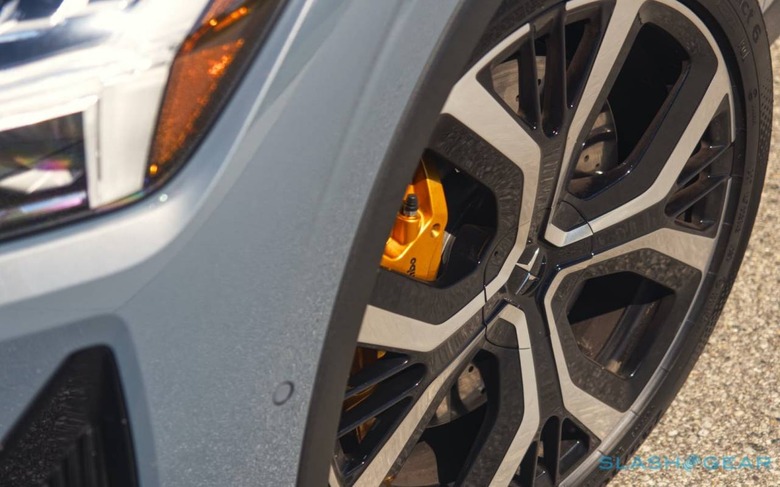
Instead, I suspect they'll do what Polestar did on my test car: set it to a midpoint and try to straddle a compromise on stiffness and compliance. So configured, the Polestar 2 definitely feels confident and stable in the turns. There's a sense of weight, yes, but comes across as being well planted rather than unwieldy.
The downside is that ill-kempt road surfaces definitely make themselves known, and I'll confess there were times I found myself wishing for a "Comfort" mode button to trade dynamics for a little extra softness. While I didn't have a chance to test a non-Performance Pack car, I'm told the soft setting on the Öhlins dampers is basically equivalent to how the standard Polestar 2 is configured. That, combined with 19-inch wheels, should leave the EV feeling a little more relaxed.
Polestar 2 range and charging
The Polestar 2 is yet to get its official EPA range, but the automaker is expecting that to land in the mid-200 mile level. The WLTP cycle rates it for 291 miles, but Polestar says it has been targeting 275 miles in the US' more demanding tests, and I suspect 250 or thereabouts is likely. We'll find out early in September.
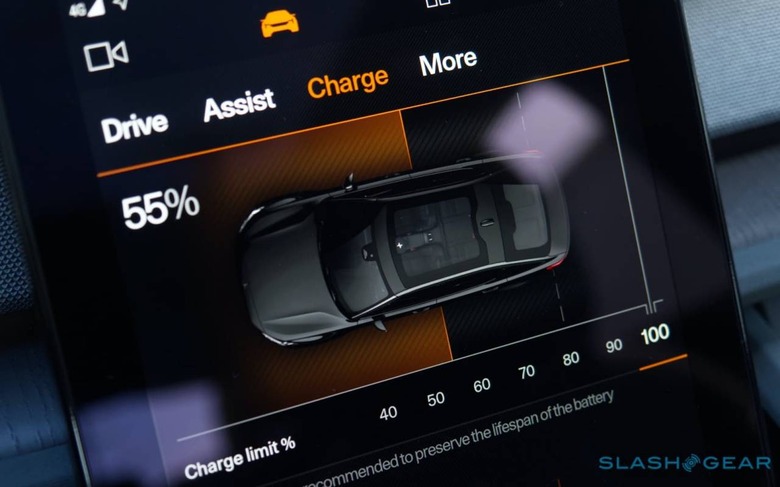
I didn't have long enough to do full range testing, which will have to wait until I've more time with the EV. Polestar says that, in independent third-party testing at a steady 70 mph, the standard version of its EV managed 205 miles (and still had 7-10 miles worth of power remaining to limp to a charger) before giving up the pace; the Performance Pack version did 197 miles. A Tesla Model 3 Performance did 234 miles (EPA rating 310 miles) under the same conditions, while an Audi e-tron did 187 (EPA rating 204 miles) and a Jaguar I-PACE did 188 miles (EPA rating 234 miles).
I started out with 94-percent battery, or 180 miles of range, on the dashboard. It's worth noting that the driver display counts range in 10 mile increments, whereas asking the Assistant for remaining range tells you it exactly. After around 80 miles of driving, I was down to 55-percent battery, or a dashboard-quoted 110 miles of range.
Now, this wasn't a scientific test by any means. My route was a mixture of highway, urban, and country road driving, and I wasn't either coddling or thrashing the Polestar 2. Basically, it's how I would drive normally, albeit with a few more mash-the-accelerator moments when faced with a straight road because, well, I'm only human.
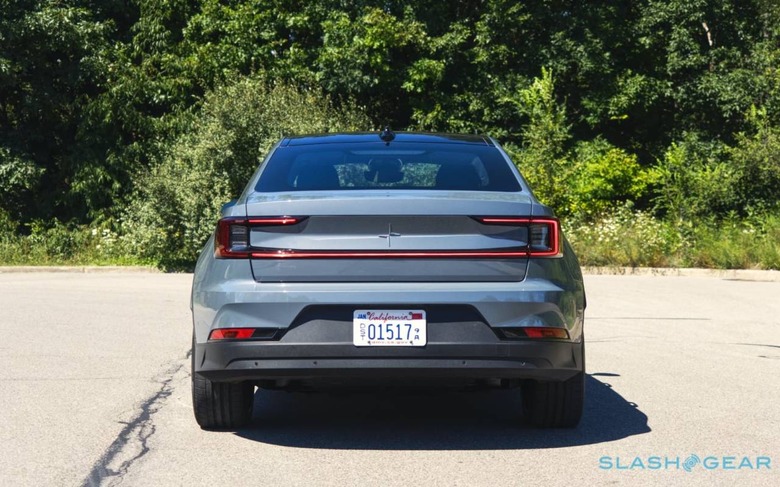
When it comes to juicing up, there's an 11 kW on-board charger and support for up to 150 kW DC fast charging with the CCS plug. Figure on going 0-80 percent on a 150 kW supply in 40 minutes, or roughly an hour to get to fully charged. With a 11 kW home wall box, a full charge takes about 8 hours; on a regular 120V outlet, you're looking at more like 22 hours.
What Polestar doesn't have is a Supercharger-style charging network of its own. Instead, you're left to fend for yourself, though Google Maps will of course help you hunt down the nearest public station. Unlike some other automakers, Polestar hasn't inked a convenience deal with any of the major charging networks; that can help avoid needing to sign up for multiple different accounts with different providers.
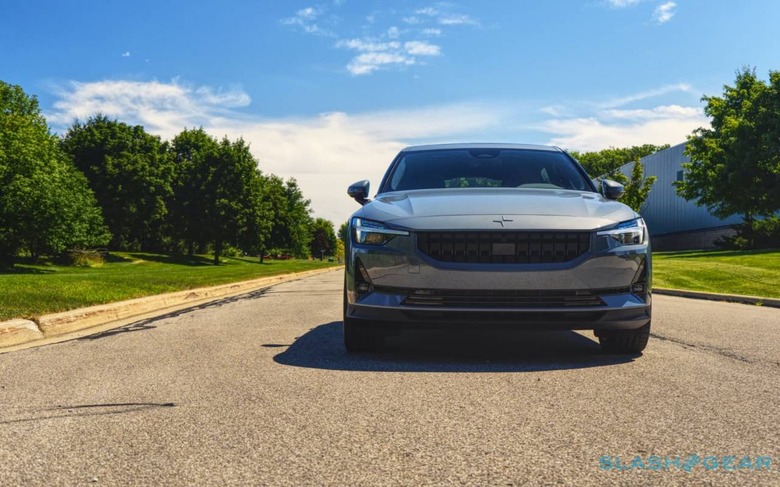
Polestar's battery has been designed not only to allow more space for rear passengers, but to be repairable. Individual modules can be swapped out if they're defective or, as is the way with all li-ion cells, degrading over time. That flexibility also means Polestar can avoid the need to be too conservative when it comes to usable battery: of the 78 kWh in total, 75 kWh is available day to day. Overall, the battery has an 8 year/100,000 mile warranty, double that of the full vehicle.
Polestar 2 Verdict
My lingering takeaway – beyond wanting to spend a whole lot more time behind the wheel – is that the Polestar 2 definitely feels like the product of a company with a history making cars. The electrification is there, of course, but it's wrapped up in a vehicle that feels considered and balanced. No rough edges, no "we'll fix that as we figure it out."
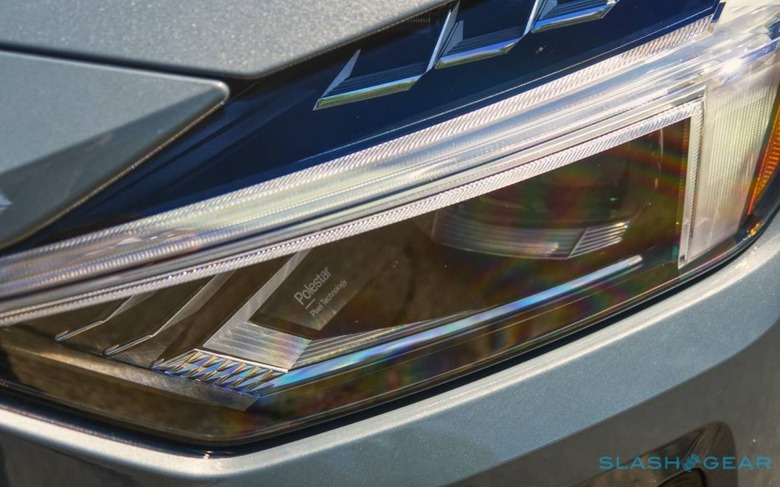
There's a joy to be found in the detailing, whether it's the frameless side mirrors, the way all the speakers have been hidden behind the cabin fabric, or the illuminated Polestar logo positioned to reflect off the glass roof. I couldn't even fault you if you opted for the Performance Pack solely for the gold detailing it adds to the seatbelts and brakes.
It's that commitment, and attention to detail, which helps distinguish Polestar 2. Not just a compelling EV, but a compelling car, period. The Polestar 3, an electric crossover set to arrive in 2022 with styling cues from the glorious Precept concept, seems like the perfect expansion for the brand, too. Polestar says its aspirations are realistic – Polestar 2 sales in the five-digit range in North America in 2021, and "tens of thousands" globally – and more importantly that it can be profitable at that level.
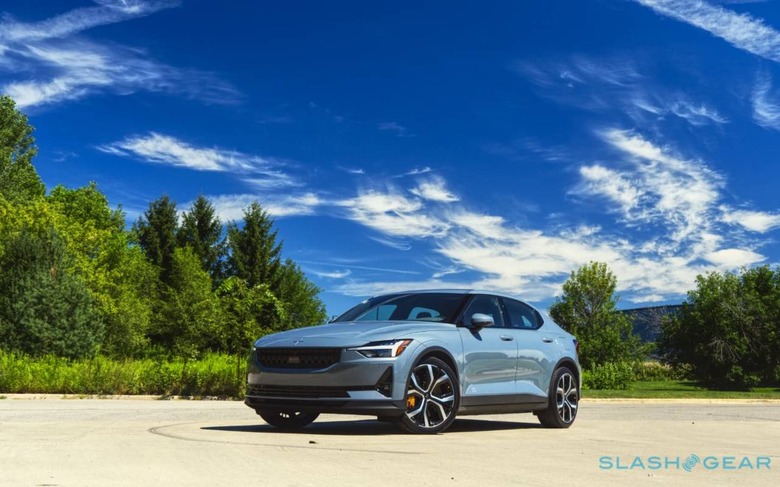
There's a knee-jerk reaction when faced with electric cars to decide whether they're a "Tesla killer" or not. The reality, though, is that there's no one-size-fits-all in any vehicle segment. Ford may have the best-selling pickup, for instance, but Chevrolet and Ram still sell plenty of trucks of their own. It's too early for me to pass a complete verdict on the Polestar 2, then, but I suspect the EV category will be all the richer with the arrival of another strong competitor.

